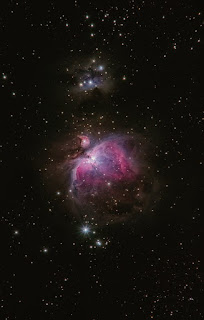Galaxy

GALAXY A galaxy is a massive and gravitational bound system which is comprised of stars (like the Sun), stellar remnants (compact stars), an interstellar medium of gas and dust, as well as the important, but misunderstood, dark matter- a matter hypothesized to account for gravitational effects that appear to be the result of invisible mass. NGC 4414, a typical spiral galaxy in the constellation coma Berenices, is about 55,000 light-years in diameter and approximately 60 million light- year from earth Galaxies can range in size from a dwarf with as few as ten million stars to massive giant galaxies with a hundred trillion stars. Each star orbits its galaxies own center of mass and it is estimated that are more than 170 billion galaxies in the observable universe. TYPES OF GALAXIES Galaxies can be classified in several ways. The most common is a system developed by Edwin Hubble, which is based on the shapes of gala...

